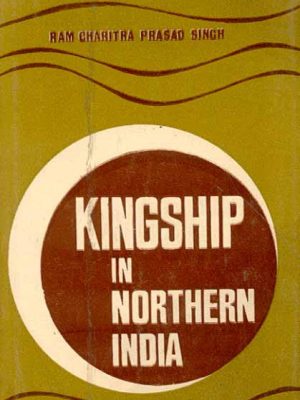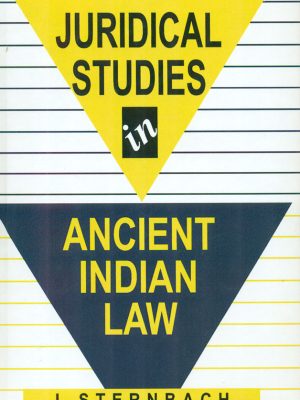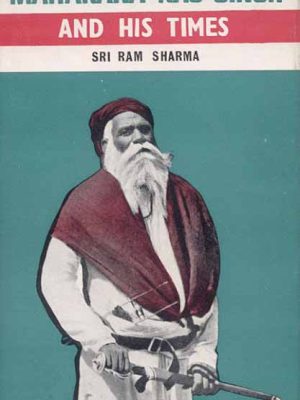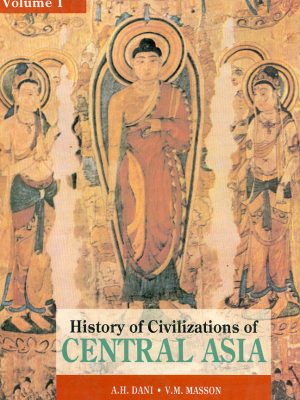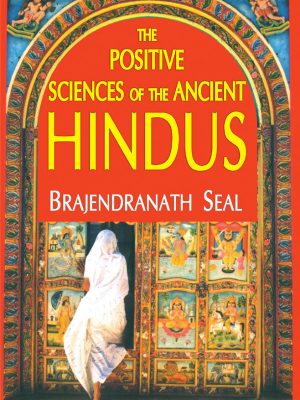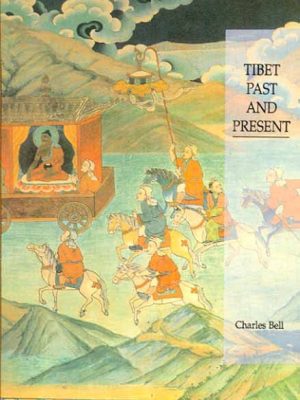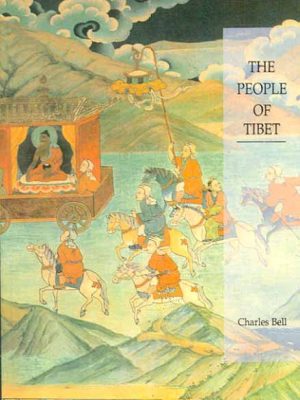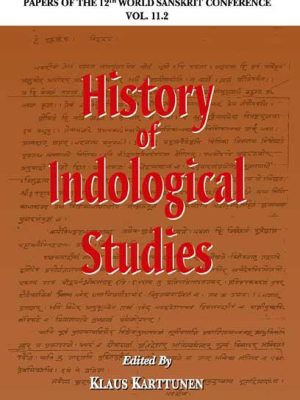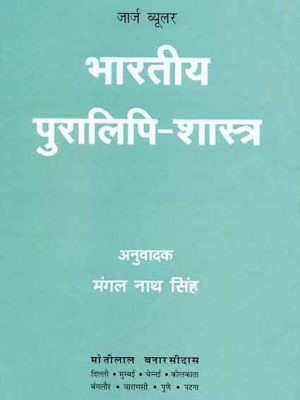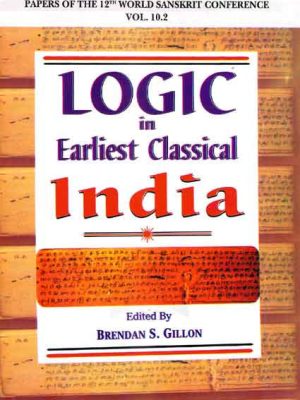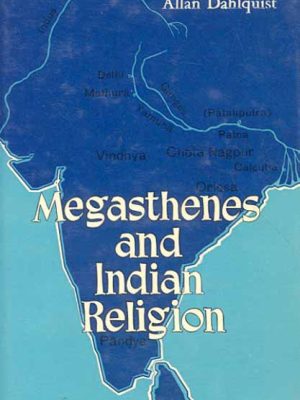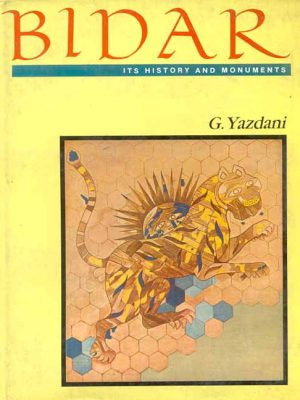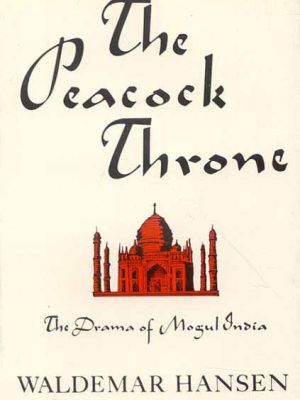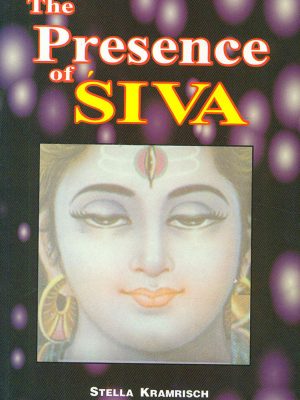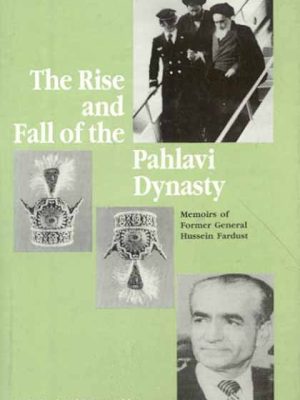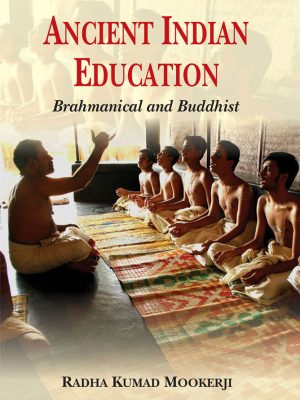History & Culture
-
Education and Social Changes in Bihar
It is for the first time that a complete critical edition of the Satapathabrahmana of the Kanva School of the Sukla Yajurveda alongwith its English translation is published. This edition has taken into account the readings available in a few more manuscripts, besides those in the published edition in Telugu script, which were not available to Prof. Caland who brought out a critical edition of its first seven Kandas. It is also the first attempt at providing a complete English translation. No doubt the texts of the Satapatha of the Madhyandina and Kanva School do not differ much from Kandas VIII to XVI and Prof.
₹495.00 -
Kingship in Northern India
The present work relates to the political organization in Northern India during the period from 600 A.D. to 1200 A.D. It describes, in detail, how several Kingdoms emerged and how their rulers claimed divinity, possessed absolute powers over their subjects. The author discusses the culminative effects of the separatist tendencies of the monarchs on Indian Polity whichultimately resulted in their weak resistance to the Muslim invaders from the North-West. The work is based on literary, epigraphic and foreign accounts. It is critical, informative and intelligible. The reader would find it interesting as well as instructive.
₹495.00Kingship in Northern India
₹495.00 -
Juridical Studies in Ancient Indian Law (2 Vols.)
The work, in two volumes, contains 40 comprehensive studies on Ancient Indian Law, each of which is an entity in itself. The first volume contains articles on ancient Indian Law proper based on Dharmasastras, the Smrtis and the Arthasastras are liberally illustrated with quotations and references from these sources. These studies deal in particular with the theory and practice of the law of deposit; pledge; suretyship; labour; debts; and marriage. It also deals with the legal position of prostitutes and physicians; legal, fiscal, social and penal privileges; the protection of plants; infanticide and many other aspects of life in ancient India. The second volume deals in particular with the application of law and the manner in which the technical legal rules were reflected in Sanskrit literary works, such as the katha literature. The author comes to the conclusion that the often theoretical legal rules, as included in the Dharmasastras, Smrtis and other sources of ancient Indian Law are faithfully relfected in the Sanskrit classics.
₹1,795.00 -
Maharana Raj Singh and His Times
Maharana Raj Singh became the ruler of Mewar at a very critical juncture in its history. As soon as the ascended the throne, Shah Jahan sent the largest Mughal force that had ever ventured into Mewar. Then followed the last sack of Chitor. Raj Singh however soon had his revenge. When Aurangzed rebelled against his father he sought Raj Singh’s support and offered ot restore what Raj Singh had lost earlier. The Maharana spun out the negotiations till Aurangzeb had finally defeated his father.
₹495.00₹550.00Maharana Raj Singh and His Times
₹495.00₹550.00 -
History of Civilizations of Central Asia: 5 Volumes in 6 Parts (Set of 6 Books)
The multi-volume History of Civilizations of Central Asia is the first attempt to present a comprehensive picture of this subject. The publication of this work falls well within UNESCO’s terms of reference since the underlying research was conducted by a distinguished international team of specialists which for many years laboured in harmony at the task of presenting to a wider public the civilization of this vast area located at the heart of the Eurasian continent. The volumes will reveal the cultures that flourished and vanished in this area, from the dawn of civilization to the present time. Only a few names, such as those of Samarkand, Bukhara or Khiva, are familiar to a wider public; eminent specialists, many of them native to the region, now lift the curtain to reveal a richer, more varied civilization. To a great extent, the history of the ancient and medieval world was shaped by the movements of peoples in this heartland of Eurasia, stretching from the Caspian Sea in the west to the borders of China proper in the east.
₹10,800.00 -
The Positive Science of the Ancient Hindus
The author’s direct aim in the present work is to furnish the historians of the special sciences with new material which will serve to widen the scope of their survey. The Hindus no less than the Greeks have shared in the work of constructing scientific concepts and methods in the investigation of physical phenomena, as well as of building up a body of positive knowledge which has been applied to industrial technique; and Hindu scientific ideas and methodology (e.g. the inductive method or method of algebraic analysis) have deeply influenced the course of natural philosophy in Asia-in the East as well as the West-in China and Japan, as well as in the Saracen Empire. The author has undertaken a comparative estimate of Greek and Hindu science. Hindu Philosophy om its empirical side was dominated by geometrical concepts and methods. The author has cared to see that the Sanskrit philosophico-scientific terminology, however difficult from its technical character, is rendered exceedingly precise, consistent, and expressive.
₹595.00 -
Tibet Past and Present
The book deals with Tibetan history from earliest times, but especially with the aims and movements of the period witnessed by the author. Anecdotes, conversations with leading Tibetans, and quotations from poetry and proverbs illustrate the Tibetan point of view. Sir Charles Bell gives an inside view of the Tibetans; he served for eighteen years on the Indo-Tibetan frontier, spoke and wrote the Tibetan language, and was brought into close touch with all classes from the reigning Dalai Lama downwards.
Recent developments in Tibet have attracted world wide attention and through this Indian edition, Sir Charles Bell’s classic study will perhaps be more eagerly read now than ever before.
₹900.00Tibet Past and Present
₹900.00 -
The People of Tibet
The present book is an attempt to speak about the life of the Tibetan people in their own homes. The contents are leaved on the author’s first-hand knowledge of Tibetan life during a residence of nearly twenty years from conversation with his Tibetan acquaintances in their own language not through interpreters. In order to keep this volume within moderate limits he had to exclude from it many aspects of Tibetan life. Shut-off from the outer world by their immense mountain barriers Tibet still presented a virgin field of enquiry. There has been little change in the inner life of the people during the last thousand years. As the area is very large and the intercourse of one part with another is restricted, the manners and customs vary in different districts and provinces.
₹650.00The People of Tibet
₹650.00 -
History of Indological Studies: Papers of the 12th World Sanskrit Conference Vol. 11.2
History of Indological studies
The history of Western knowledge of Indian began about 2500 years ago, but the history of Indology only about 230 years ago. It happened in Kolkata, as a fusion of colonial and scholarly interests, but also not uninfluenced by the scholarly traditions of India. In the next 75 years Indological chairs were founded in important universities in most European countries. The present volume contains a general introduction to the history of South Asian studies, a bibliography and six case studies of different aspects, including early Indological studies in India, Indological traditions in Sweden and Denmark, sanskrit studies in Russian cultural history, Ukrainian translations from Sanskrit and the Sanskrit correspondence between the French Indologist Sylvain Levi and the Nepalese scholar Hemaraja Sarma.
₹1,000.00 -
Bharatiya Puralipi-Shastra
Bharatiya Puralipi-Shastra is authored by mangal nath sinh, Geroge bulher.
₹500.00Bharatiya Puralipi-Shastra
₹500.00 -
Logic in Earliest Classical India: Papers of the 12th World Sanskrit Conference held in Helsinki, Finland, 13-18 July 2003 Vol. 10.2
The last two decades of Indological research have led to a marked increase in the investigation of logic in India, especially in the earliest period of classical India. A panel of senior and junior scholars from America, Asia, and Europe, all specialists working in this area, was concerned at the 12th World Sanskrit Conference, held in Helsinki in the summer of 2003. This volume contains not only their papers, which address both philosophical and philological matters pertaining to logic as propounded in texts from this period, but also an introduction designed to permit non-specialists, whether non-Indologists or non-philosophers, to learn about Indian logic in its infancy.
₹750.00 -
Megasthenes and Indian Religion
This work deals at length with various theories about relgion prevalent at the time when Megasthenes visited India very interesting and scholarly views have been put forth regarding investigations of Megasthenes their reliability and the reliability of his reporters.
Undoubtedly Culture of India lacks historical aspect inasmuch-as does not provide as to when an event took place or certain concept was first used
₹695.00Megasthenes and Indian Religion
₹695.00 -
Shahanshah: The Study of Monarachy of Iran
This Book is a study in political and legal theory. Its concern is with the power of Shahanshah- its essential nature its traditions the exercise of its function. In 7 Chapters, identifiable with the office of the Shahanshah the book offers – a synopsis of Iranian National Epic (1) Aspects of Achaemenid history and the establishment of the Monarchy (2) the aristocracy (3) the relationship between politics and religion (4) the armed forces (5) the Government (6) and law justice and rule (7). This is not a formal history but a record of series of parallels.
₹695.00 -
Bidar: Its History and Monuments
The town of Bidar, some eighty miles from Hyderabad, flourished as the capital of the Bahmani kings during a hundred years from about the middle of the fifteenth century. It afterwards experienced sundry vicissitudes, and fell into complete decay in the later part of the nineteenth century, its once beautiful palaces and public buildings, formerly the envy of the great cities of India, becoming a neglected mass of debris. Dr. Yazdani, who visited Bidar for the first time in 1915, drew up a comprehensive programme for the thorough repair and conservation of the monuments at Bidar, and the work has been carried out through the enlightened policy of the NizamÍs Government by whose authority the present magnificently illustrated record has been made available. It surveys the physical features, history, and architecture of Bidar in Chapters I-III and thereafter treats in detail the numerous historical monuments, which include rare masterpieces of architecture and ornament in the palace buildings, temples, mosques, and tombs.
₹1,395.00Bidar: Its History and Monuments
₹1,395.00 -
Peacock Throne: The Drama of Mogul India
Epics of history are rare and The Peacock Throne is one of them. No royal lineage offers such a spectacle of high drama as the Mogul Dynasty of India which created the world’s most famous monument-the Taj Mahal. Not since Greek tradedy has there been so stark a revelation of the excesses of human behavior: incest, fratricide sons revolting continuously against fathers and the madness of uncontrolled aggression. These are the forces animating The Peacock Throne which brings India to both Eastern and Western readers as never before.
₹995.00 -
The Presence of Siva
One of the three Great Gods of Hinduism, Siva is a living god. The most sacred and most ancient book of India, the Rg Veda, evokes his presence in its hymns. Vedic myths, ritual, and even astronomy testify to his existence from the dawn of time. In a lively meditation of Siva-based on original Sanskrit texts, many heretofore not translated-Stella Kramrisch ponders the metaphysics, ontology, and myths of Siva from the Vedas to the Puranas.
Who is Siva? the author asks. Who is this god whose being comprises and transcends everything? None of the pairs of opposites, nor the sum of his uncounted names, defines him. From the down of creation, the Wild God, whose ancient name is Rudra, is Consciousness. He is the Great Yogi, the guardian of the absolute. His actions are the themes of the myths in which his nature unfolds.
By retelling and interweaving the many myths that continue to convey Siva’s presence as a living god in India today, Professor Kramrisch unfolds the paradoxes in Siva’s nature and thus in the nature of consciousness itself. The magnificent sculptures at Elephanta, illustrated at the end of the book, capture in another medium the presence of the god.
₹1,295.00The Presence of Siva
₹1,295.00 -
The Rise and Fall of the Pahlavi Dynasty: Memoirs of Former General Husein Fardust
A country of extreme strategic importance, Iran has undergone profound, often dramatic, changes. Its geo-political importance and rich resources have always made Iran a prime target for the covetous eyes of mighty world powers. With its unique geographical position, Iran has been the main center for superpower rivalries with its rulers seeking protection from one power against the other.
It also aims at providing a comprehensive and objective consideration of the major contemporary issues, examining the factors which brought down a regime which was loyal to and an ally of the United States and the clerical-led movement which toppled the pro-Western Shah’s regime.
₹795.00 -
Ancient Indian Education: Brahmanical and Buddhist
This work is intended to fill up a gap in the literature on the history of Education, which has not taken adequate account of the unique contributions made by Hindu thought to both educational theory and practice. The work is divided into Two Parts. Part 1 (Chs. 1-12) deals with the concepts and practices of Brahmanical Education on the authority of Veda, Astadhyayi, Arthasastra of Kautilya, Sutra literature and Epics. It discusses the problems of Legal, Industrial and Vocational Edu
₹1,495.00 -
Kangra Valley: My Spiritual Journey…
The Kangra Valley in the state of Himachal Pradesh, India, is one of the most fascinating travel destinations in the region, both for its spiritual sites as well as the spellbinding landscape. This amazing landscape is home to many religions, most notably Tibetan Buddhism and Hinduism, Christianity and Sikhism. Much like other regions in the Himalayas, this convergence of spirituality has given rise to a special culture, which can be seen in the day-to-day activities of the communities living here. Its given a sense of harmony and strength in the region for thousands of years and it resonates all across Kangra Valley.
₹2,200.00Kangra Valley: My Spiritual Journey…
₹2,200.00

